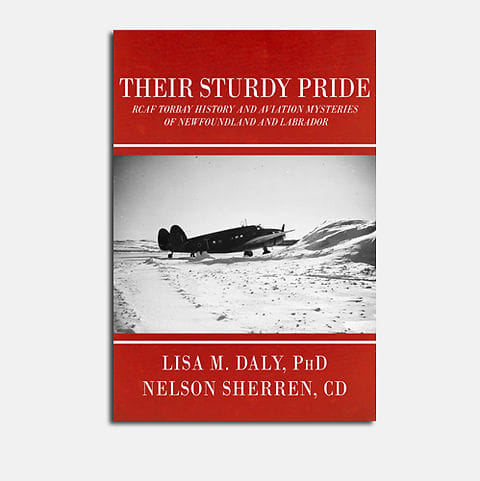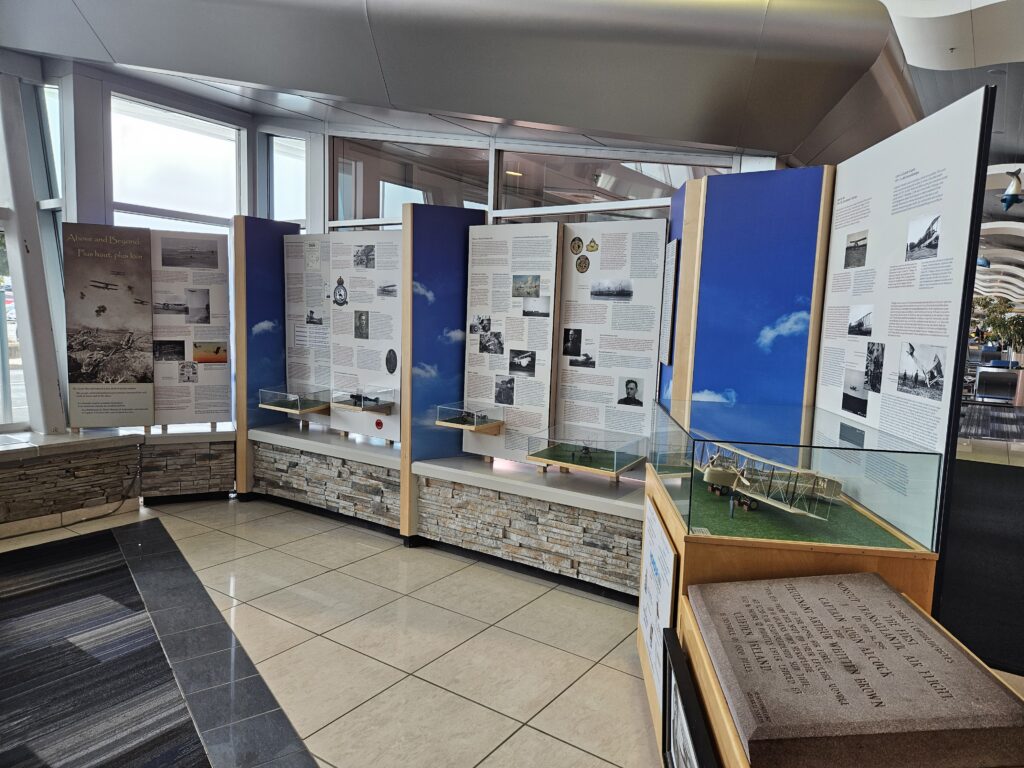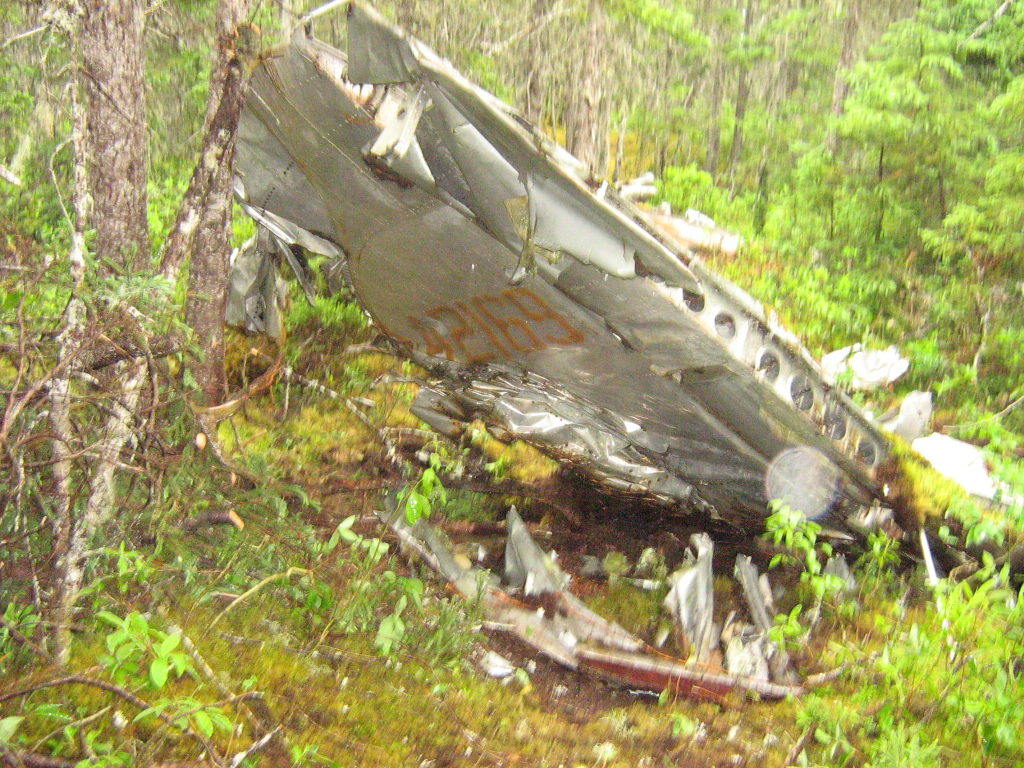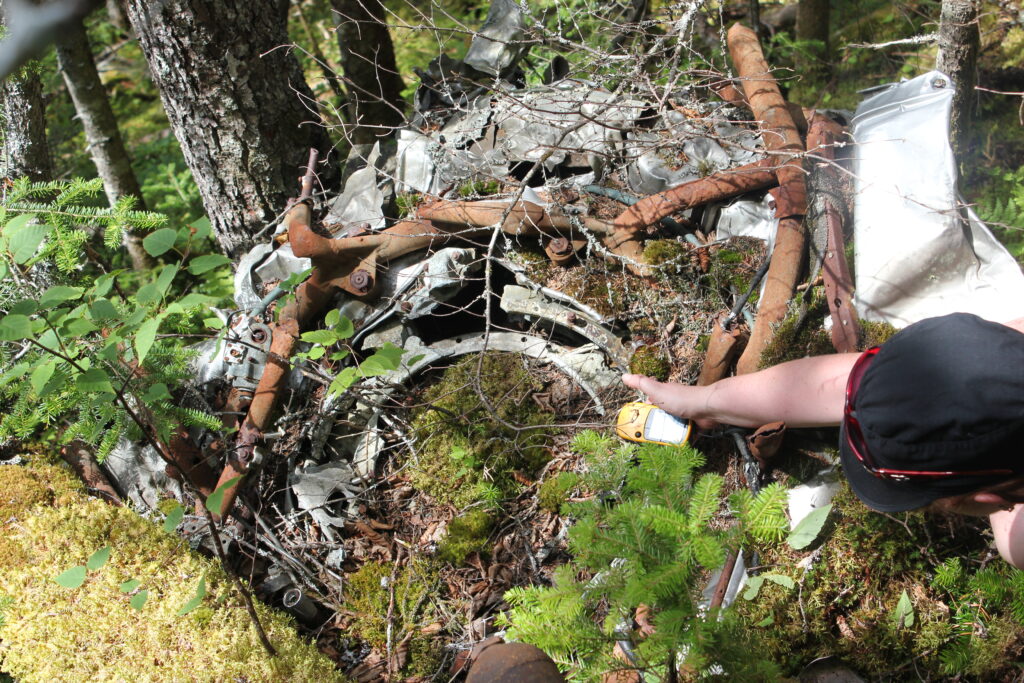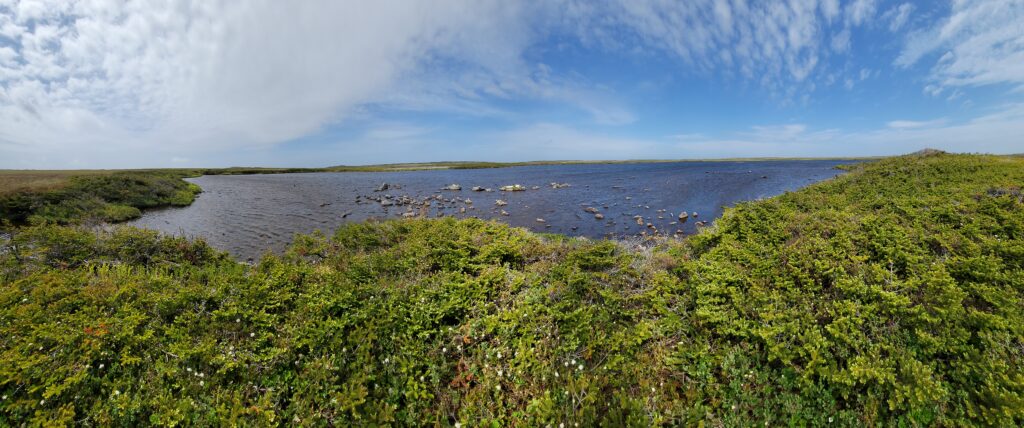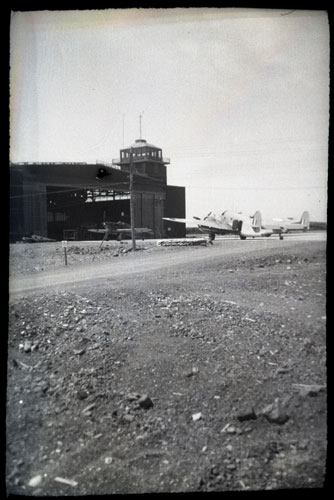Research and writing have been going well of late. I have been making plans for future research, and finishing up a peer-reviewed paper that should be released soon. The Provincial Archaeology Office Annual Review was recently released, with a little information about a site in Harbour Buffett that I had the pleasure of visiting with Neil Burgess of the Newfoundland and Labrador Shipwreck Preservation Society. To see the article, either click here to download the pdf, or the PAO link above and scroll down to volume 22 for 2023 Field Season.
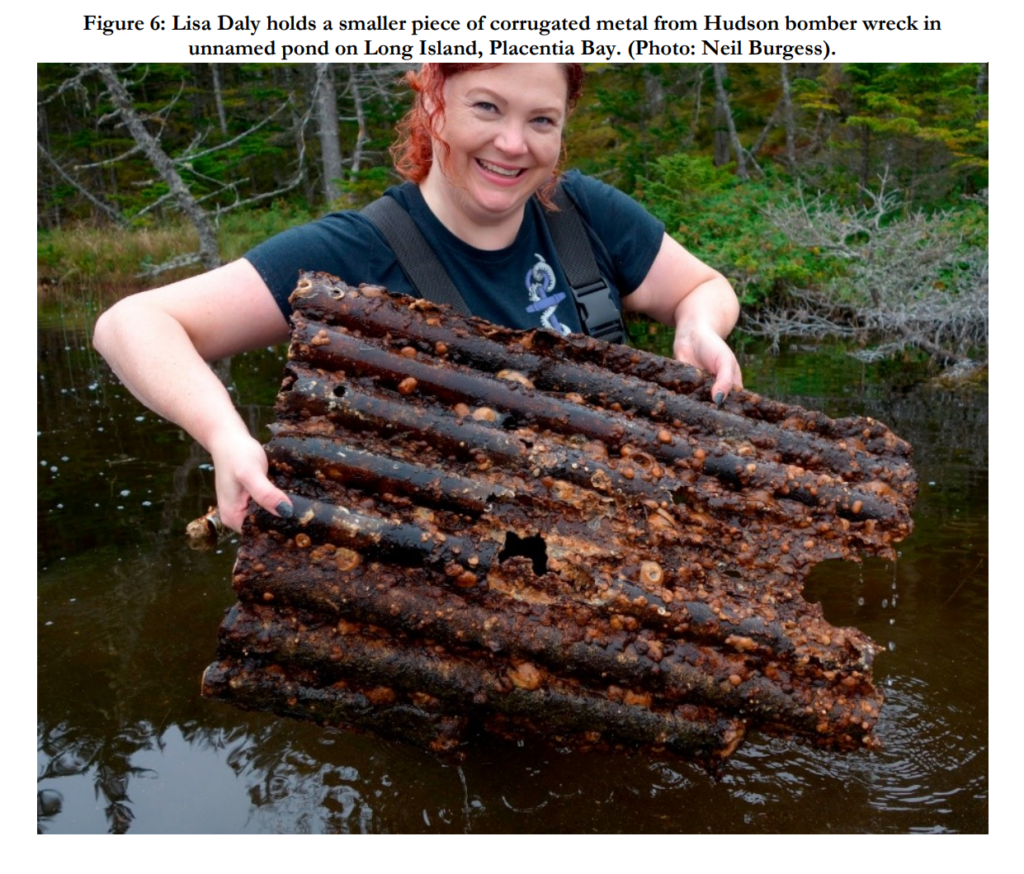
PBO-1 Bomber #03844 at Harbour Buffett. From Burgess & Daly 2024.
Now this blog post comes about when a family member, who was in an airport waiting for a flight at the time, messaged me to ask if I knew about a plane that crashed in the long range mountains during the war (Second World War), where everyone on board survived. They then brought the plane to Gander and put it back together. I didn’t know anything about that off the top of my head, as my work does usually deal with the physical remains of aircraft. There often isn’t much to see when an aircraft has been completely recovered, though I did one potentially determine the site of a crash where nothing remained based on photographs of the tree line from the Second World War to the current tree line (some of that story can be found in issue 46 of Riddle Fence). I asked a few more questions, and they were talking to someone whose father was a Newfoundland Ranger and was part of the crew who found the men and the airplane.
I decided to look around the resources in my personal library, and of course first check Darrell Hillier’s North Atlantic Crossroads (if you don’t have it yet, pick it up, it’s a fantastic book. And maybe check out Their Sturdy Pride while you’re there…). Second, I grabbed the two books I have on the dedicated topic of the Newfoundland Rangers, in particular, The Newfoundland Rangers by Darrin McGrath, Robert Smith, Ches Parsons, and Norman Chase. Most of this post does rely on the research done by Darrell Hillier, and as I didn’t get a chance to visit the archives, his archival research as noted in his references. As always, Hillier does fantastic research.
According to Hillier’s research, on 16 March 1942, RAF Ferry Command Hudson FH235 had engine trouble and had to do a wheels-up landing on a snow-covered barren hill on Brooms Hill near the town of Codroy. On board the aircraft were pilot Captain Jahaziah Shaw Web, an American, navigator Gordon A.L. Webby of New Zealand, and radio operator Louis A. Caldwell (country of origin not listed). There were no injuries in the crash. Due to the blowing snow and low visibility, the crew mistakenly thought they were near the Magdalen Islands, but a search of the area could not find them. Once the weather cleared, they managed to pinpoint their location and a search spotted them and confirmed that location, and the RCAF dropped supplies. The crew left the site of the crash, and started to walk to Codroy.
Once in Codroy, the airmen, in full flying gear which left an impression on a six-year-old Kendall Samms, were able to report their arrival via Kendall’s mother, Lottie Samms, who was the local postmistress and Aircraft Detection Corps observer. Hudson FH235 was then put under guard by the Newfoundland Rangers.
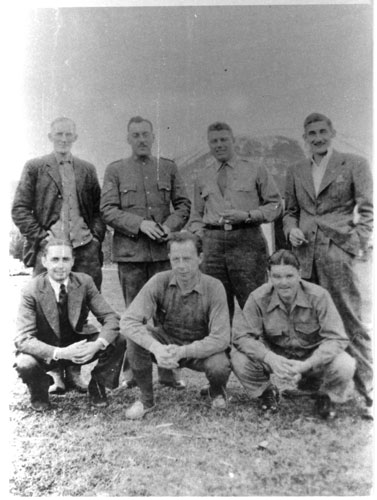
Standing: James Tompkins, Afton Farm, Tompkins; Newfoundland Ranger Harry Walters (Regt. #29); Captain J. Shaw-Webb, Pilot, R.A.F. Ferry Command; Officer L.A. Caldwell, R.A.F. Ferry Command. Front row: Ronnie Bethune, Agricultural representative; Newfoundland Ranger Fred Thompson (Regt. #62), Codroy Valley detachment, Tompkins; Navigator G.A.L. Webby, Royal New Zealand Air Force. From The Rooms VA 128-17.1.
The Ranger who was stationed in the area at the time was Frederick Thompson, Regimental Number 62. Fred Thompson was born in St. John’s on 14 December 1917, educated at St. Bon’s College, and joined the Rangers in August 1937. He was posted in Codroy, Badger, and Port aux Basques and left the Rangers with an honourable discharge in 1942. The Chief Ranger wrote of him that “His work at all times was of a very excellent standard, and had he elected to remain with the Force would have attained N.C.O.’s rank. His character was exemplary.” Thompson went on to become a radio operator with the RCAF and Transport Canada and retired as Inspector-in-Charge, Radio Regulations, Newfoundland and Labrador in 1971. He had three children with Margaret Thompkins, whom he wed in 1940, Terrence, Carl, and Mark, though I’m not sure who was at the airport that day to start this little post.
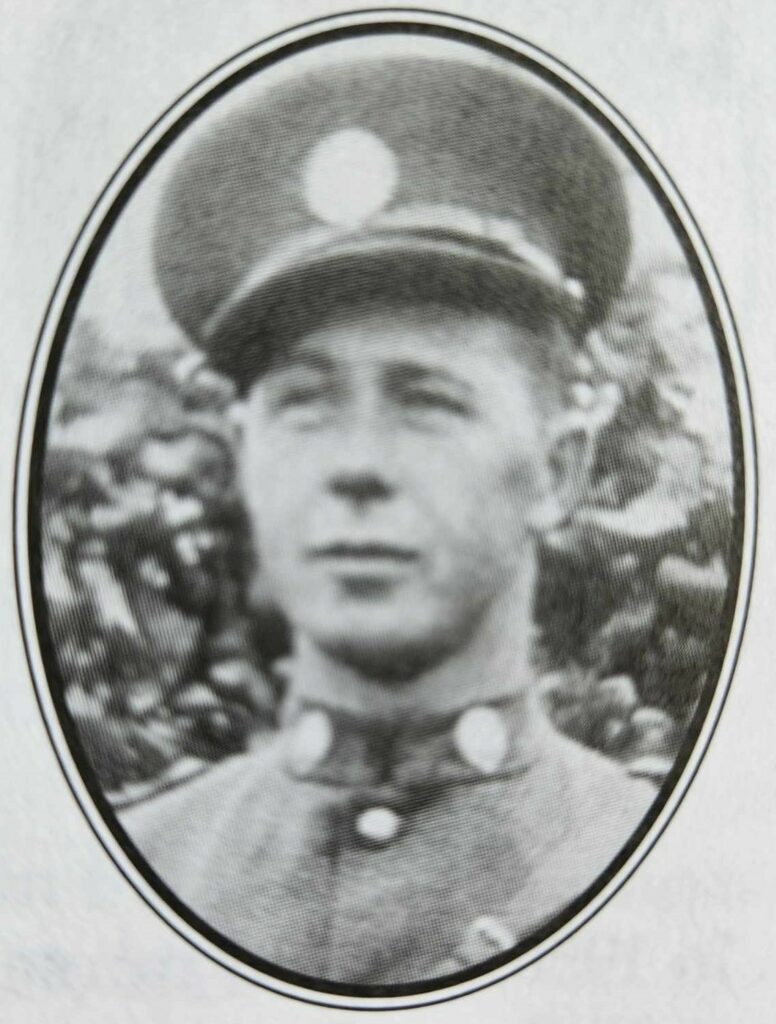
Joseph Gilmore became involved with the incident as Gander’s superintendent of maintenance (Gilmore has also been recognized as an exceptional person of the past by Heritage NL. See more, including a paper by Darrell Hillier about Gilmore here). Gilmore quickly made his way by train to Codroy with a team of Ferry Command mechanics and mechanic’s helpers. On 21 March 1942, Gilmore had locals take four teams of horses the five miles up to the crash site. Because of the snow, the horses could only make it three miles, and the men had to walk the rest of the way.
Gilmore assessed the structural integrity of the Hudson aircraft and decided it could be completely salvaged. He, with the help of his team and locals of Codroy, worked with horse and dog teams dismantle the aircraft. The weather was cold, so the work was slow, and then delayed by a morning when a snowstorm on 23 March forced them back to Codroy. That afternoon they removed the flaps and tail assembly before returning to Codroy. The next day they removed the port and starboard wings and removed the fuel from the Hudson. Again, they were pushed back to Codroy by a snowstorm. They returned to the crash site the next day, using horse-drawn sleighs, they removed the twin Wright air-cooled radial engines and the barrels of fuel they had pumped the day before. The fuselage and wings were pulled to the edge of a wooded area. The next five days saw the rest of the aircraft dismantled and removed by Gilmore, his crew, and local help. The fuselage turned out to be the most challenging part, and they had to use horses, mules, dog teams, and of course, their own strength, to drag the aircraft down on a jury-rigged sleigh-like frame. The heavy snow was a challenge throughout the recovery.
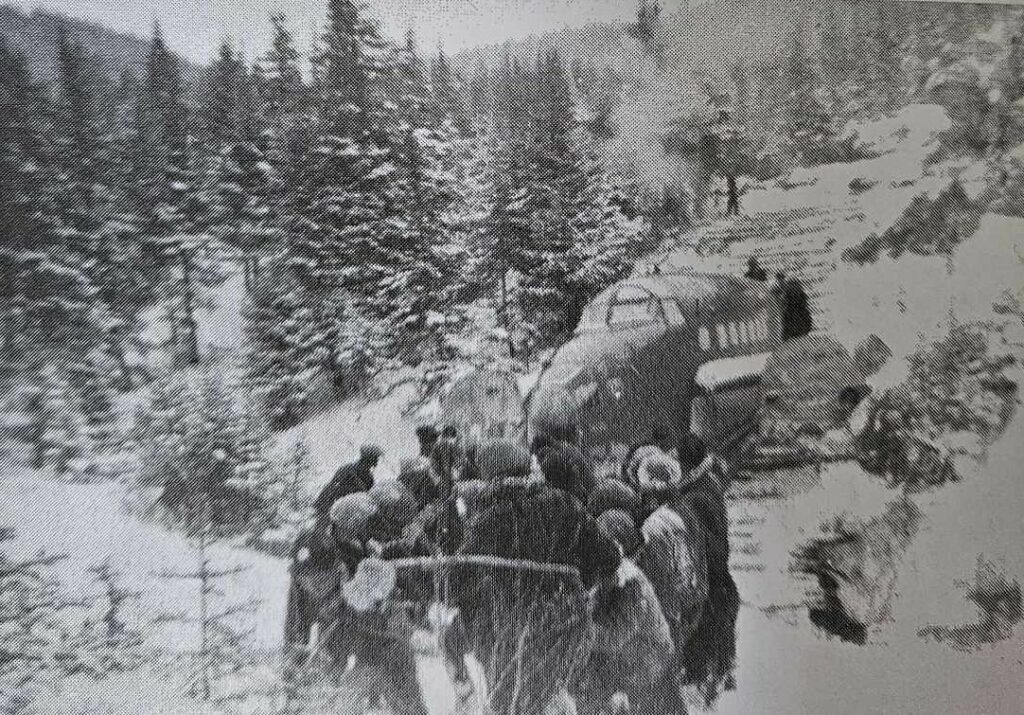
Once at Codroy, the aircraft had to wait until the spring thaw. While waiting in Codroy, a new name was given to the aircraft. “Spirit of Codroy” was stenciled on the nose to honour the work done by the locals in the recovery of the aircraft. Once it was possible to do so, Hudson FH235 was shipped to Montreal for repairs.
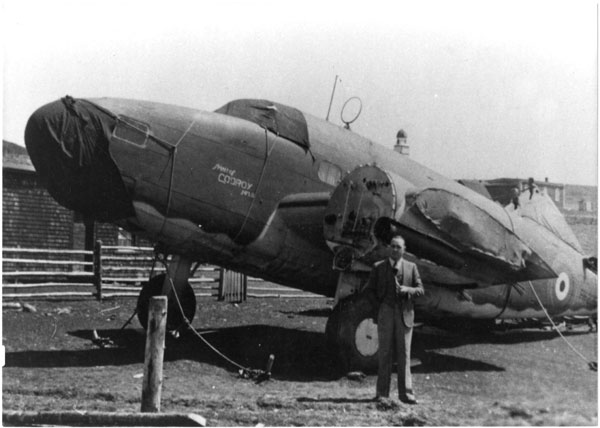
Later, the people of Codroy were again recognized, this time by Air Chief Marshal Bowhill, who, in April 1942, send a letter to the Newfoundland Commissioner for Justice and Defence, the Honourable Lewis E. Emerson for “the valuable work rendered by Ranger F.A. Thompson, both to the crew of the Hudson […] and to Mr. Gilmore. [… and] great appreciation […] to the people of the village of Codroy [for their] extremely valuable help.”
Hudson FH235 was repaired and returned to flying condition. It reentered service, but was written off in February 1943 in a fatal crash near Wilmington, New York.
References:
Hillier, Darrell. 2021. North Atlantic Crossroads: The Royal Air Force Ferry Command Gander Unit, 1940-1946. Atlantic Crossroads Press: Canada.
McGrath, Darrin, Robert Smith, Ches Parsons and Norman Crane. 2005. The Newfoundland Rangers. DRC Publishing: St. John’s.

